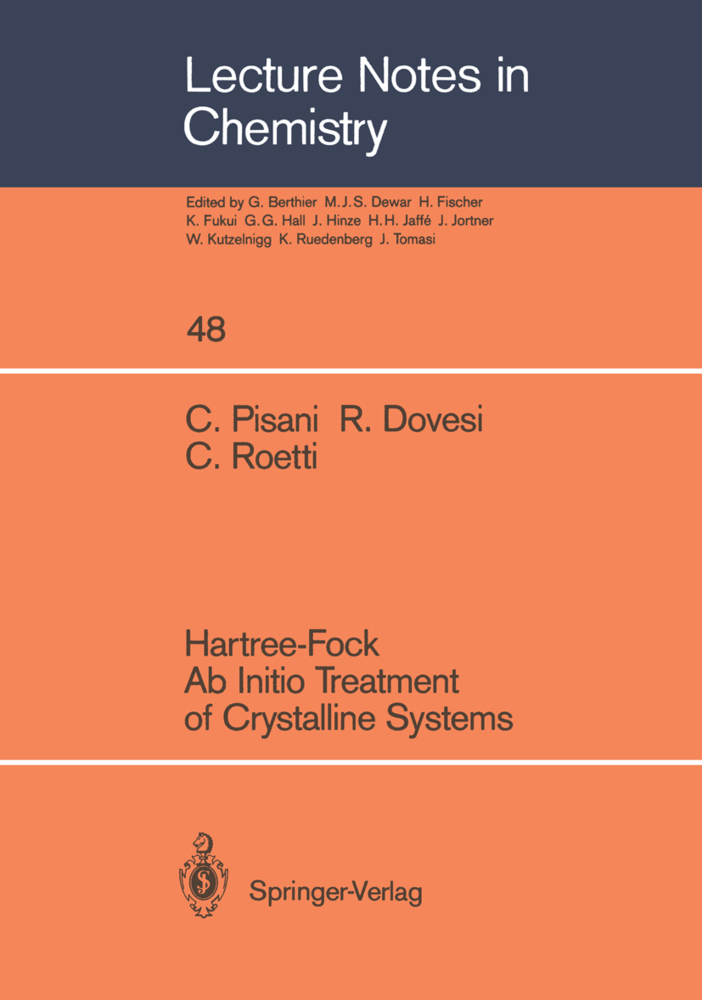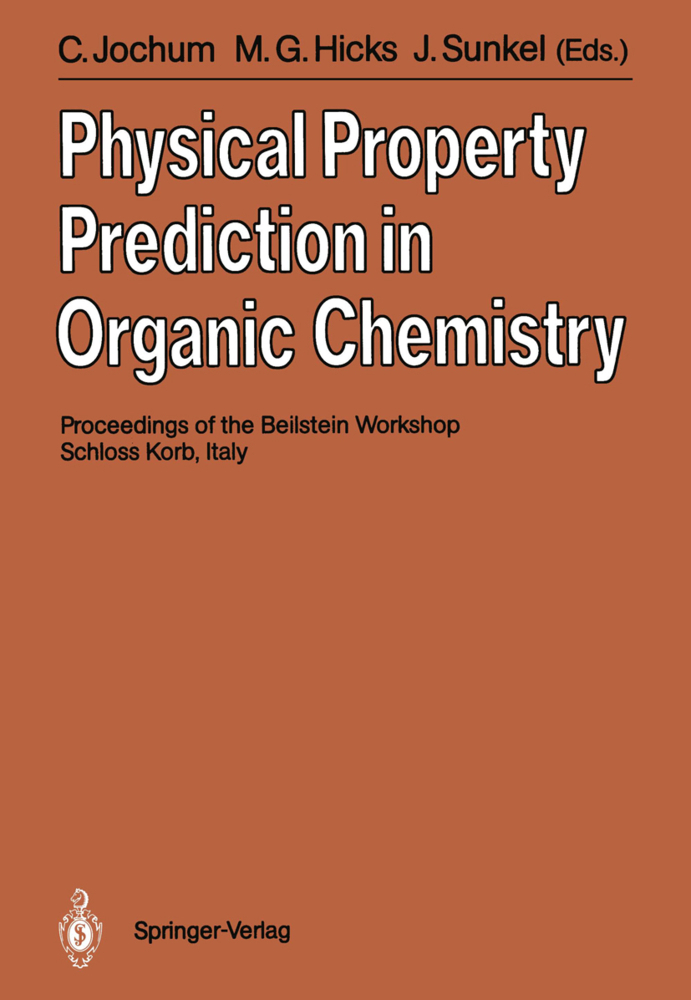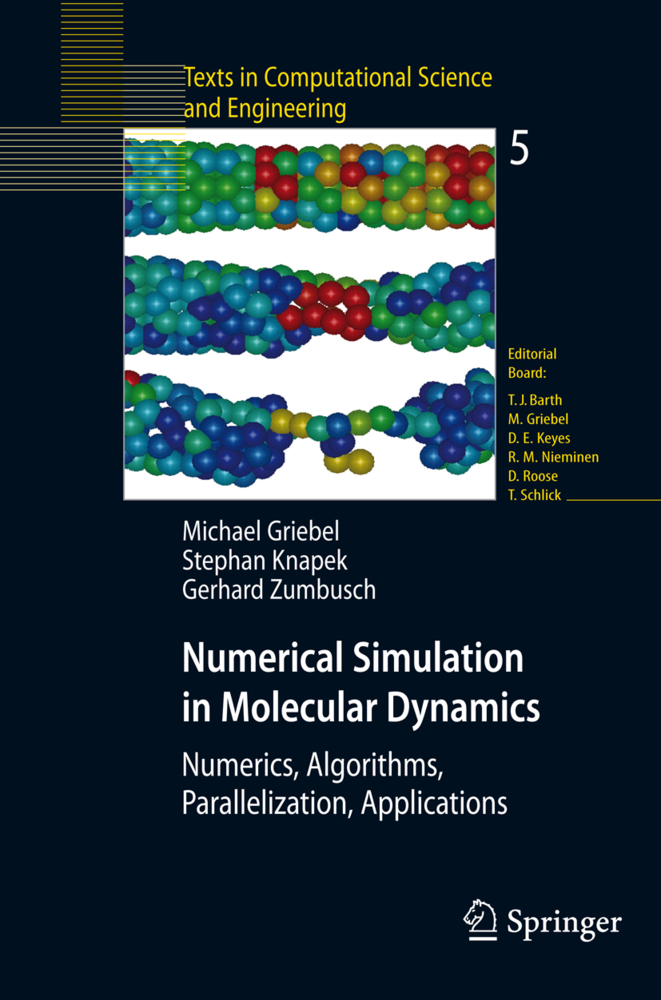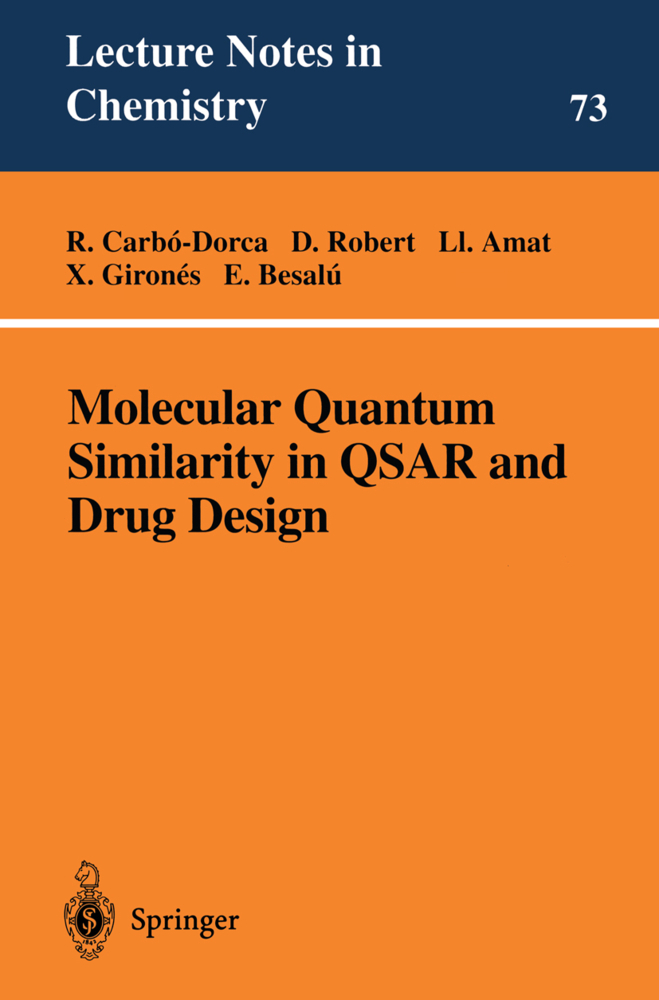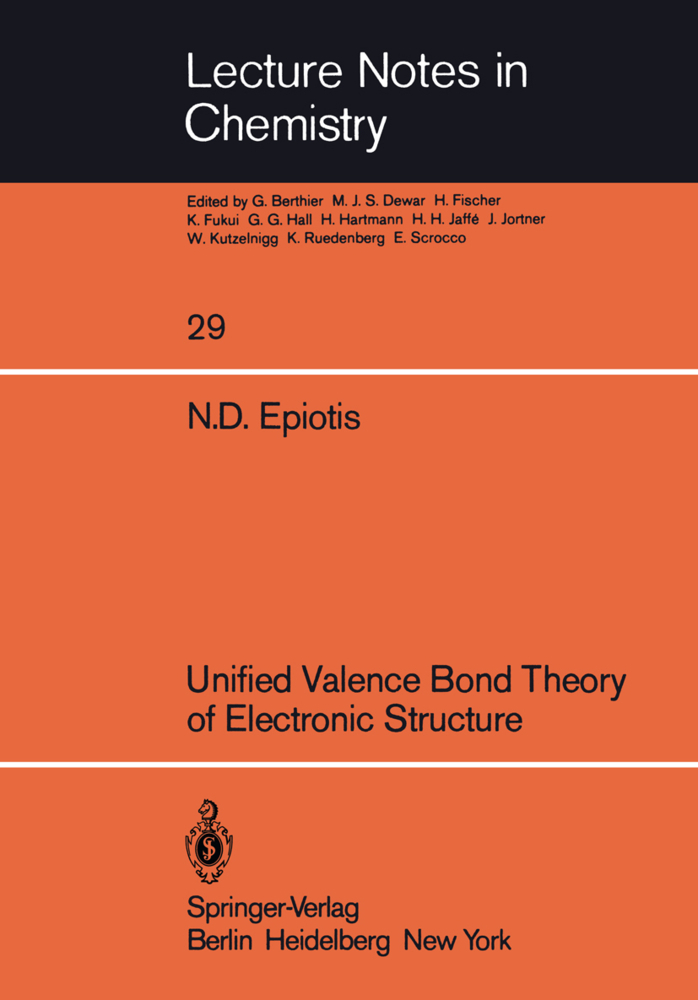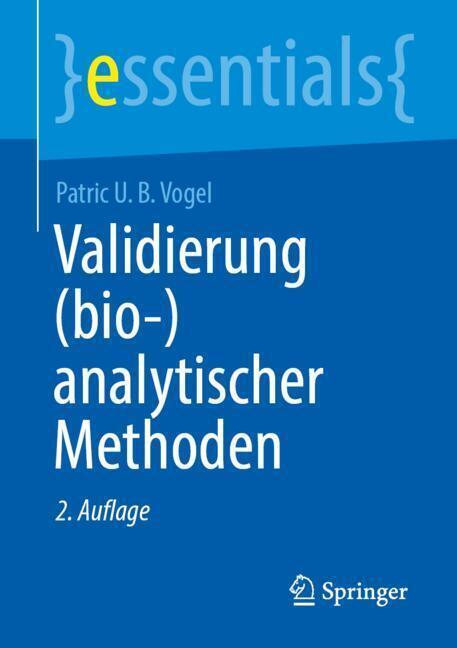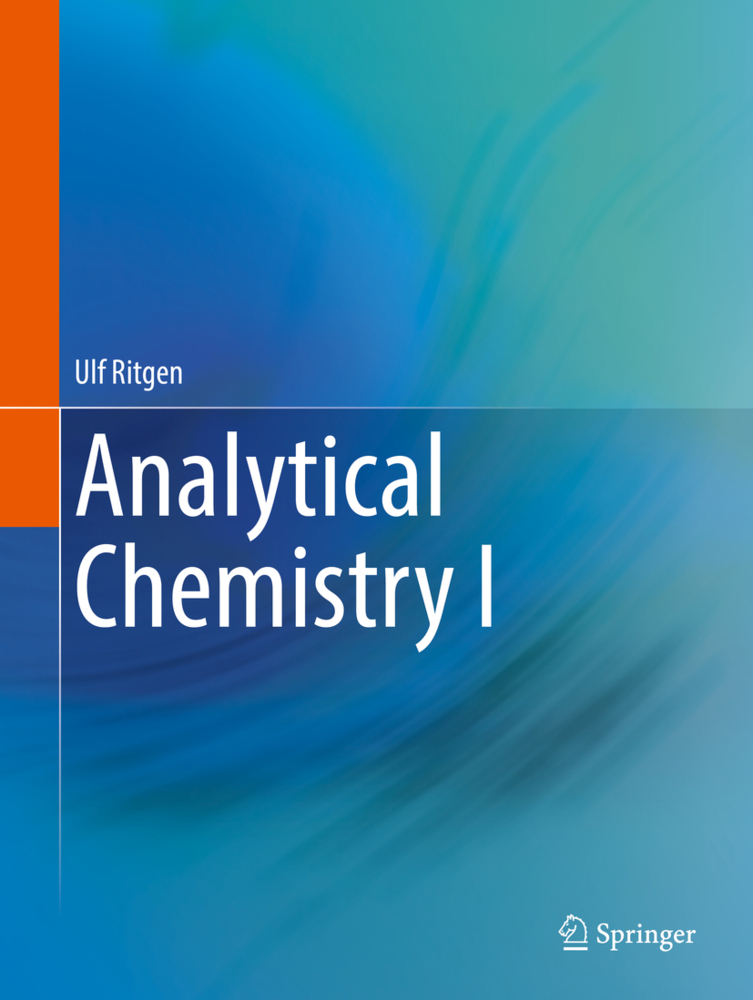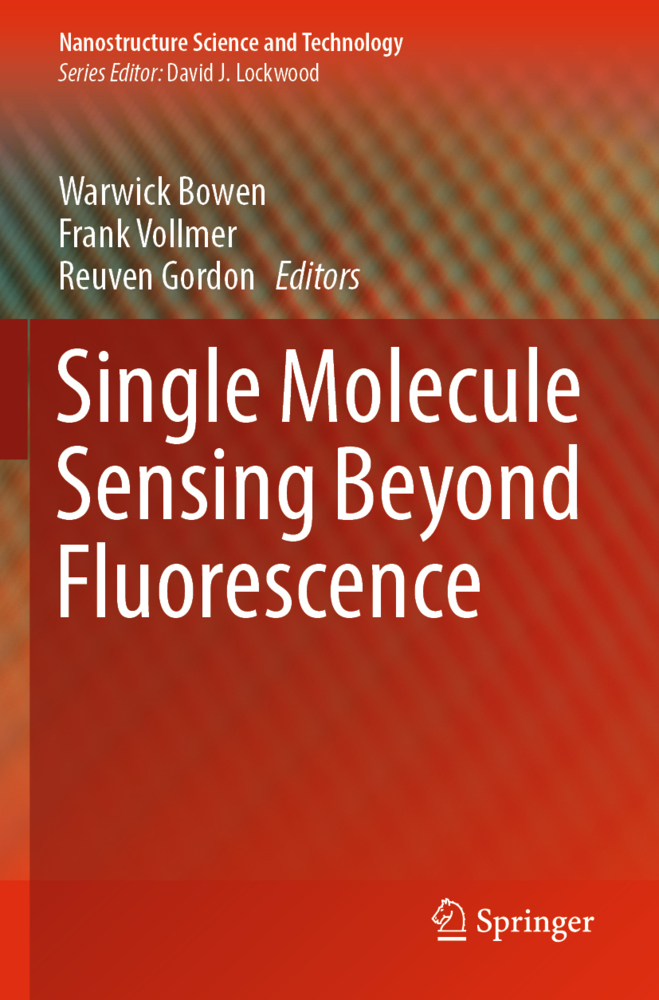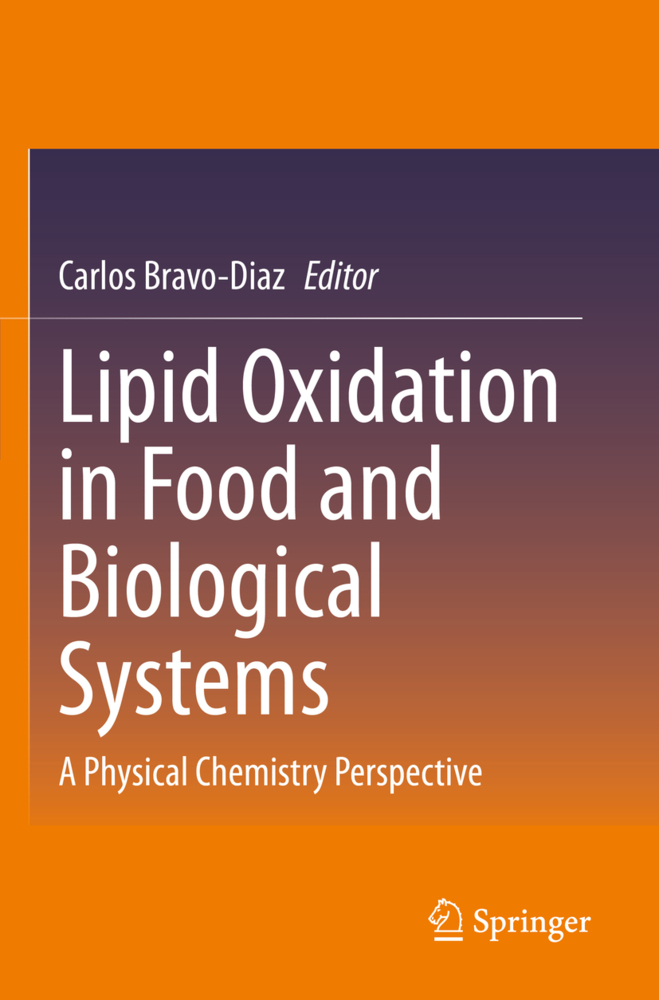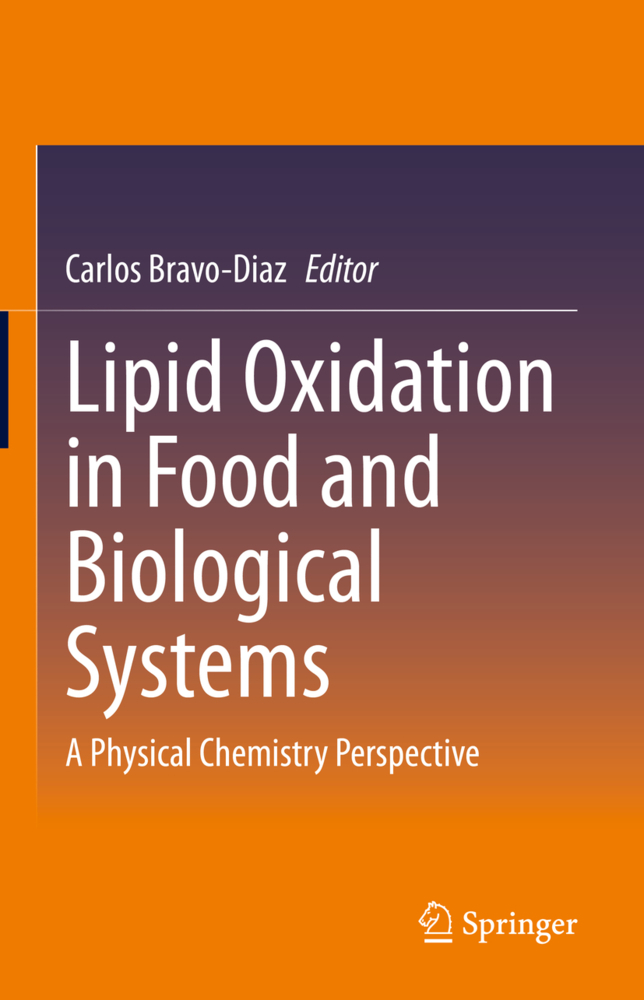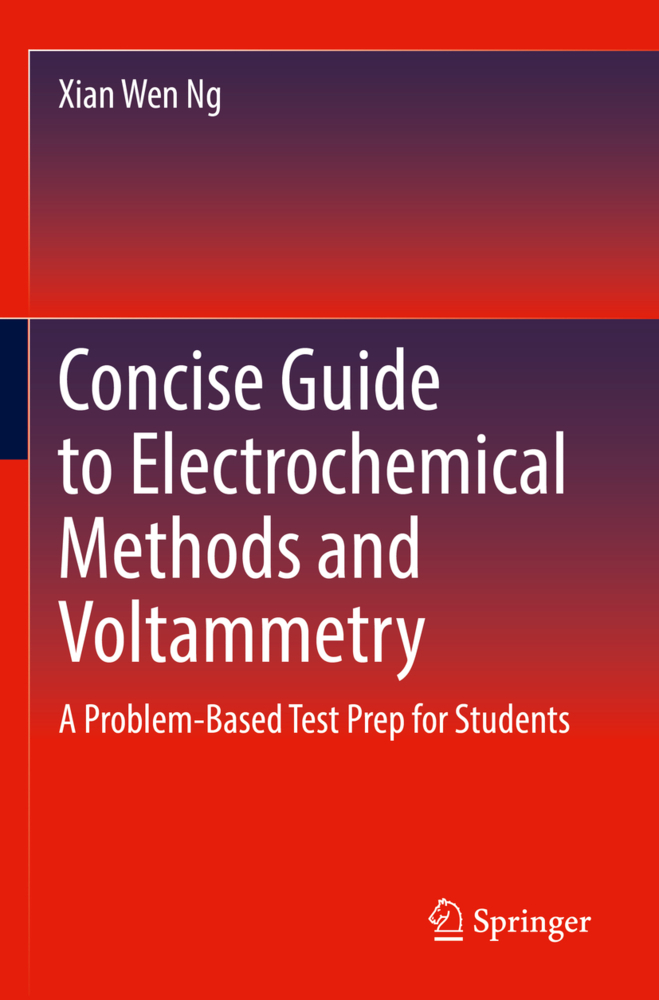Hartree-Fock Ab Initio Treatment of Crystalline Systems
Hartree-Fock Ab Initio Treatment of Crystalline Systems
This book presents a computational scheme for calculating the electronic properties of crystalline systems at an ab-ini tio Hartree-Fock level of approximation. The first chapter is devoted to discussing in general terms the limits and capabilities of this approximation in solid state studies, and to examining the various options that are open for its implementation. The second chapter illustrates in detail the algorithms adopted in one specific computer program, CRYSTAL, to be submitted to QCPE. Special care is given to illustrating the role and in:fluence of computational parameters, because a delicate compromise must always be reached between accuracy and costs. The third chapter describes a number of applications, in order to clarify the possible use of this kind of programs in solid state physics and chemistry. Appendices A, B, and C contain various standard expressions, formulae, and definitions that may be useful for reference purposes; appendix D is intended to facilitate the interpretations of symbols, conventions, and acronyms that occur in the book. Thanks are due to all those who have contributed to the implementation and test of the CRYSTAL program, especially to V.R. Saunders and M. Causal, and to F. Ricca, E. Ferrero, R. Or lando, E. Ermondi, G. Angonoa, P. Dellarole, G. Baracco.
I. 2 A mosaic of options for the ab initio treatment of crystalline systems
I. 3 Specific features of crystalline with respect to molecular Hartree-Fock computational schemes
I. 4 Overcoming the limitations of the all-electron HF perfect-crystal model
II. Implementation of the Hartree-Fock Equations for Periodic Systems
II. 1 Introductory remarks
II. 2 Basis functions and charge distributions
II. 3 Basic equations
II. 4 The Coulomb series and the Madelung problem
II. 5 The exchange series
II. 6 Interpolation and integration in reciprocal space
II. 7 Symmetry properties
II. 8 Choice of basis set and related problems
II. 9 The CRYSTAL program
III. Calculation of Observable Quantities in the HF Approximation
III. 1 Energy and energy related quantities
III. 2 Band structure and density of states (DOS)
III. 3 Electron charge density and related quantities
III. 4 Electron Momentum Distribution (EMD) and related quantities
Appendices
A. Solid harmonics and multipolar expansion of Coulomb interactions
B. Definition of Brillouin Zone and related quantities
C. The McMurchie-Davidson technique for the evaluation of the molecular integrals
C1. Hermite gaussian type functions (HGTF)
C2. The Gaussian product theorem and the expansion in HGTF
C3. The expansion coefficients E
a) Recursion in ?
b) Recursion in ? and |m| =?
c) Method of generation
C4. Overlap and kinetic integrals
C5. Nuclear attraction integrals
C6. Two electron repulsion integrals
D. Symbols and notations
References.
I. Different Approaches to the Study of the Electronic Properties of Periodic Systems
I. 1 Many-electron systems: the viewpoint of theoretical chemists and physicistsI. 2 A mosaic of options for the ab initio treatment of crystalline systems
I. 3 Specific features of crystalline with respect to molecular Hartree-Fock computational schemes
I. 4 Overcoming the limitations of the all-electron HF perfect-crystal model
II. Implementation of the Hartree-Fock Equations for Periodic Systems
II. 1 Introductory remarks
II. 2 Basis functions and charge distributions
II. 3 Basic equations
II. 4 The Coulomb series and the Madelung problem
II. 5 The exchange series
II. 6 Interpolation and integration in reciprocal space
II. 7 Symmetry properties
II. 8 Choice of basis set and related problems
II. 9 The CRYSTAL program
III. Calculation of Observable Quantities in the HF Approximation
III. 1 Energy and energy related quantities
III. 2 Band structure and density of states (DOS)
III. 3 Electron charge density and related quantities
III. 4 Electron Momentum Distribution (EMD) and related quantities
Appendices
A. Solid harmonics and multipolar expansion of Coulomb interactions
B. Definition of Brillouin Zone and related quantities
C. The McMurchie-Davidson technique for the evaluation of the molecular integrals
C1. Hermite gaussian type functions (HGTF)
C2. The Gaussian product theorem and the expansion in HGTF
C3. The expansion coefficients E
a) Recursion in ?
b) Recursion in ? and |m| =?
c) Method of generation
C4. Overlap and kinetic integrals
C5. Nuclear attraction integrals
C6. Two electron repulsion integrals
D. Symbols and notations
References.
Pisani, Cesare
Dovesi, Roberto
Roetti, Carla
| ISBN | 978-3-540-19317-3 |
|---|---|
| Artikelnummer | 9783540193173 |
| Medientyp | Buch |
| Copyrightjahr | 1988 |
| Verlag | Springer, Berlin |
| Umfang | VII, 193 Seiten |
| Abbildungen | VII, 193 p. |
| Sprache | Englisch |

